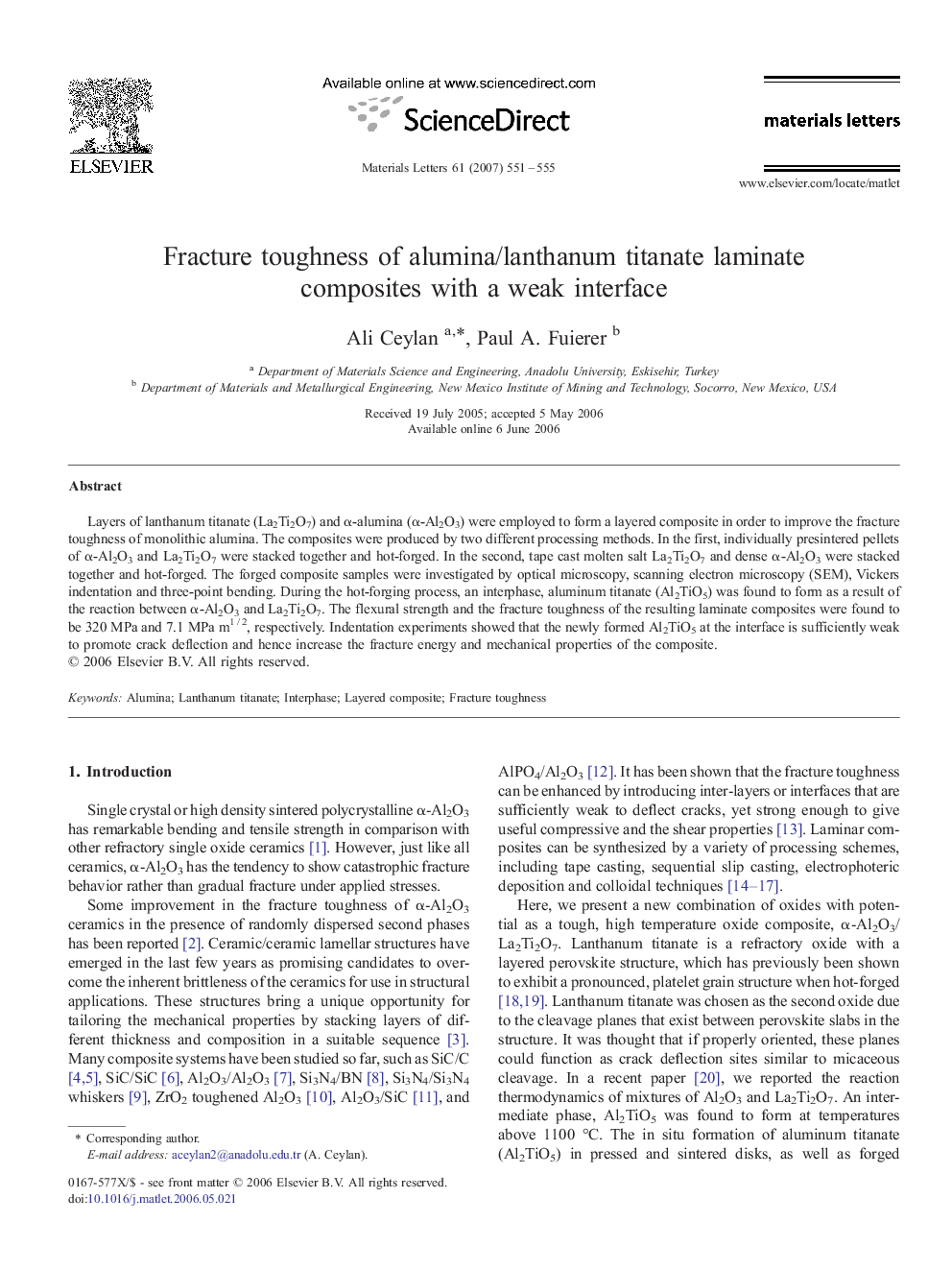| Article ID | Journal | Published Year | Pages | File Type |
|---|---|---|---|---|
| 1652109 | Materials Letters | 2007 | 5 Pages |
Layers of lanthanum titanate (La2Ti2O7) and α-alumina (α-Al2O3) were employed to form a layered composite in order to improve the fracture toughness of monolithic alumina. The composites were produced by two different processing methods. In the first, individually presintered pellets of α-Al2O3 and La2Ti2O7 were stacked together and hot-forged. In the second, tape cast molten salt La2Ti2O7 and dense α-Al2O3 were stacked together and hot-forged. The forged composite samples were investigated by optical microscopy, scanning electron microscopy (SEM), Vickers indentation and three-point bending. During the hot-forging process, an interphase, aluminum titanate (Al2TiO5) was found to form as a result of the reaction between α-Al2O3 and La2Ti2O7. The flexural strength and the fracture toughness of the resulting laminate composites were found to be 320 MPa and 7.1 MPa m1 / 2, respectively. Indentation experiments showed that the newly formed Al2TiO5 at the interface is sufficiently weak to promote crack deflection and hence increase the fracture energy and mechanical properties of the composite.
